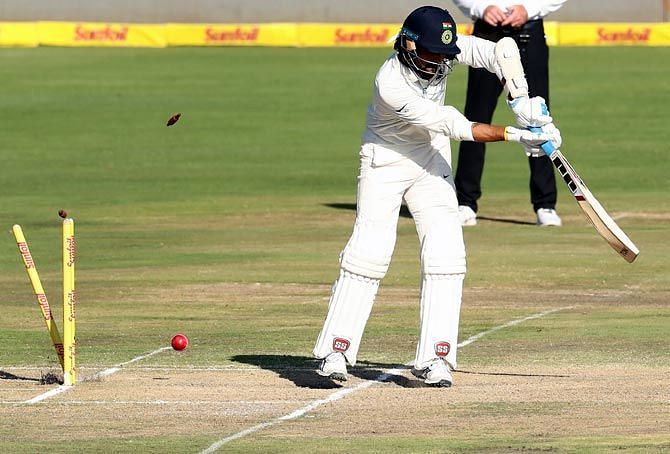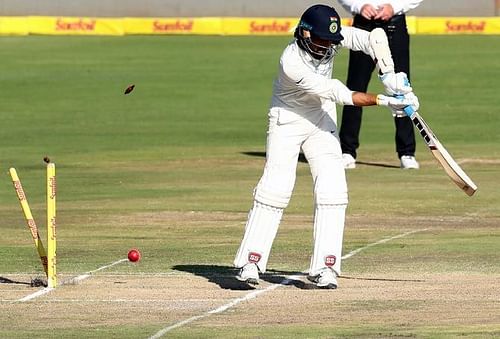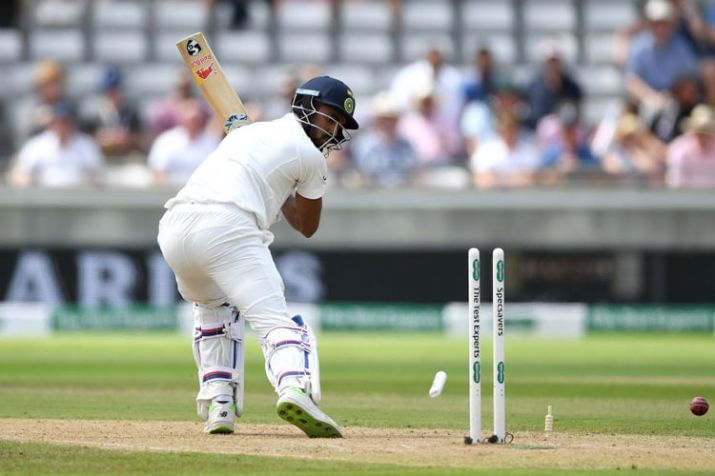
India’s opening conundrum

Musical chairs are being played with the Indian openers in test match cricket. After every match, someone or the other has to leave. This is disappointing both for the players and the fans. For the former, it's about not being able to cement his position in the team and for the latter, it’s the sad sight of seeing the openers get out very quickly and not be able to put up a good score. The opening batsman lay a foundation for everyone coming in after them; if they can weather the harsh conditions, a team generally can put up a good score.
At home conditions, the openers look settled as they are familiar with the conditions. However, when you travel overseas to South Africa or England, everyone seems out of sorts. To play against a moving ball in seaming conditions, any batsman would need practice and a lot of time in the middle to adapt to the new conditions. This is where India have got it wrong.
Roll the clock back to the tour of South Africa, the first mistake was that there were no practice matches, so crucially for the openers, the practice and the live test overlapped in the first match. The expectations that everyone has from openers are very high. This coupled with no practice, puts them in a precarious situation and under tremendous pressure.
The natural thing then would be not to judge the openers by one or two performances. More often than not, an individual score may not reflect the quality of the innings. For instance, consider a player who has scored say 25 runs in 20 balls, and another who has scored five runs off 30 balls. Upon looking at the score, it would seem that the first player was well set, but in reality, could have scored most of his runs via edges. The second player could be presumed to be stuck in a shell, whereas in fact, he might have picked the right scoring opportunities and could have gotten out at the wrong time. Hence you need to give the openers an extended run to understand what they are capable of.

This is where team India got it wrong again. They kept changing the opening pair time and again. Shikhar Dhawan was dropped after the first match against South Africa, he was dropped again after the first match against England. Murali Vijay was sent home after the second test against England.
Hardik Pandya, on the other hand, though in the middle order was given a run of 3 matches in South Africa and 4 in England, which is ample time to decipher whether he is up to the task or not. He was able to come up with match-winning performances but lacked consistency. When someone is given a run like this, both the player and the selection panel benefit. The player knows that he won’t be dropped after one poor performance and the selection committee also have enough time to assess what the player is capable of.
Unfortunately, this has not been the case for the openers. I’m sure they have played every match with the fear of being dropped for the next. When one plays with fear, he can never perform to his true potential. It is very unfair then to expect good performances from either of Rahul, Dhawan or Vijay, when they are playing with such fear and under tremendous pressure. Cricket ultimately is a confidence game. Someone just has to walk up to the openers and tell them that no matter what, they will be given an extended run, and only then will their place in the team be decided.
India next tour Australia in December. One can only hope that they go in with one set of openers and persists with them for the entire series. This would benefit the openers and give them a lot of self-confidence and self-belief, and I’m sure they would be able to notch up good performances Down Under.